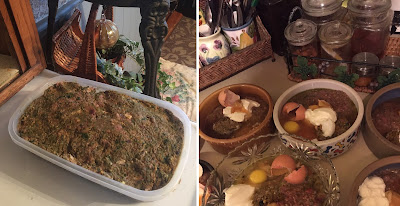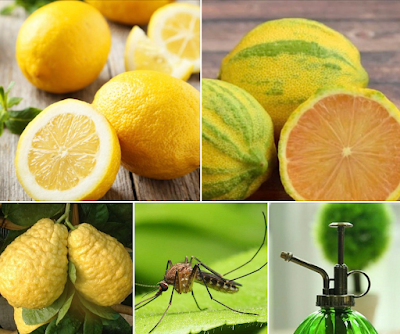Food Allergies in Dog, Cats – Causes, Symptoms, Natural Treatments
In this article:
- What Triggers Food Hypersensitivities (Intolerance and Allergies) in Dogs and Cats
- What Happens In the GI Tract When Food Triggers a Hypersensitive (Intolerance or Allergic) Response
-
Symptoms of
Food Hypersensitivities (Intolerance and Allergy Symptoms)
-
Common Food
Allergens to Avoid and Appropriate Alternatives
- The Elimination Diet
- Natural Treatments to Sooth Symptoms
- Diarrhea
- Ear Infections
- Eye Irritation and Eye Infections
- Anal Gland Issues, Paw and Skin Issues
1.0 What Triggers Food Hypersensitivities (Intolerance and Allergies) in Dogs and Cats
One of the most common causes of ear infections and paw and skin irritations is an over-growth of bad bacteria in the
gastrointestinal tract (GI Tract) which leads to a yeast bloom. The most common
cause of yeast overgrowth is a food allergy. When the root cause of the bloom
is not treated the condition becomes chronic. When the root cause of the
infection is treated incorrectly (i.e. the solution offered by the veterinarian
is multiple courses of antibiotics, is a prescription food, is a steroidal medication such as prednisone further health issues can and very
often do ensue.
Food hypersensitivities occur due to overreaction of the immune
system triggered by repeated ingestion of foods and additives that are
potential and in many cases known allergens. In addition, once a dog or cat’s
immune system becomes hyperactive it may also become reactive to food items
that would not normally create a problem, for example chicken or beef. As well there are additional factors that can
exacerbate sensitivity. For example, toxic food and drugs the farm animal was exposed to:
GMO corn?
Growth hormones?
Grains high in aflatoxins?
GMO corn?
Growth hormones?
Grains high in aflatoxins?
These substances damage your dog and cat's gut health and immune system.
Discussed further in this article.
2.0 What Happens In the GI Tract When Food Triggers a Hypersensitive Response (Intolerance or Allergic Response)
The GI tract digests and breaks down food to release nutrients for absorption into the blood stream.
The GI tract prevents partially digested non-nutritive matter
(animate and inanimate) and allergenic matter from entering the blood stream. These substances are passed out of the body via the lower digestive tract.
When partially digested matter slips through the semi-permeable wall of the GI tract into the blood stream the immune system reacts, resulting in an allergic reaction. The slippage of unwanted material into the blood stream is called ‘leaky gut syndrome’, the medical term is dysbiosis.
This immune system response will occur every time the dog or cat consumes the substance that caused the reaction.
When the substance is consumed on a regular basis or intermittent basis the allergic reaction becomes a chronic event.
3.0 Symptoms of Food Hypersensitivities
Common symptoms of food hypersensitivities (intolerance and allergies) include:
Gastrointestinal Issues
for example:
- Abdominal discomfort
- Acid reflux
- Anal gland issues
- Constipation
- Diarrhea
- Gas
- Loose stools
- Inappetence
- Nausea
- Vomiting
Infections
Skin and Fur Issues:
for example:
- Paws
- Select locations on the body
- All over body
- Acne
- Hot spots
- Inflamed skin
- Irritated skin
- Rashes
4.0 Common Food Allergens to Avoid, and Appropriate Alternatives
4.1 Toxic Animal Protein, Fat, Bone
4.1.1 Factory Farmed Products
Factory farm sourced animal proteins, animal fats, bones and by products can lead to food intolerance, and otherwise harm your dog and cat's health.
Learn more about toxins and other harmful substances in factory farm sourced products:
- Go to this article.
4.1.2 Condemned Denatured Meat, Fat, Bones
D4 animal products (dead before entering the slaughter facility, diseased, dying and disabled animals) are not permitted for use in human food production. However these animals are allowed for use in pet food.
The USDA, Health Canada, and the FSA have regulations in-place to condemn D4 animals to ensure the animal carcasses and parts do not enter the human food production chain. Under the regulations the condemned meat, fat, , bones etc. must be denatured with a denaturing product. Denaturing product are toxic.
To learn more about:
- D4 animals.
- Condemned denatured animal products.
- How these products harm your dog and cat's health.
- How to avoid these products.
Go to this article.
4.2 Egg By Products
Egg by products are the effluent left over from processing eggs for human consumption. Egg by products include the water and chemicals used to 'wash' eggs, fragments of eggshell, etc. Egg by products are toxic and have no nutritional value.
Learn more about the chemical washing agents used on eggs.
- Go to this article.
4.3 Fish Meal and Toxic Preservatives
Fish meal is a toxic product. Its made from poor quality fish, undesirable fish, fish rejected from the human food supply due to various reasons including:
- Disease.
- Contamination with aflatoxins and other toxic substances.
- Rancidity.
- Effluent left over from human food processing.
Depending on the supplier, fish meal can also contain ethoxyquin, a toxic, carcinogenic preservative.
Learn more about ethoxyquin.
- Go to this article.
4.4 Inappropriate Fats
Examples of inappropriate fats include:
- Fish oil from farmed fish.
- Rendered fat from D4 animals and from animals fed GMO grains, soy, hormones, antibiotics; rancid fat preserved with chemical-based preservatives.
- Vegetable oils, e.g. canola, cottonseed, safflower, soy.
- Fish
- Go to this article.
- Coconut Oil
- Go to this article.
4.5 Grains and Starchy Seeds
Grains and starchy seeds are a common allergen. Grains and starchy seeds also cause and contribute to a wide range of health issues and disease in dogs and cats.
Without exception, grains and starchy seeds are not an appropriate food for dogs or cats. For example:
Without exception, grains and starchy seeds are not an appropriate food for dogs or cats. For example:
Additionally, grains used in dog and cat food can be contaminated with aflatoxins.
Aflatoxins can also be found in cotton seed oil, fish meal,
legumes (peanut butter, peanuts and other ground nuts and beans, e.g., lentils chickpeas, etc.).
Learn more about why grains and starchy seeds are harmful to dogs and cats.
- Go to this article.
4.6 Starchy Root Vegetables
Like grains, starchy root vegetables cause and contribute to a wide range of health issues and chronic disease in dogs and cats.
Starchy root vegetables that are inappropriate for dogs and cats include:
Learn more about these starchy root vegetables:
- Why and how they harm your dog and cat's health.
- Appropriate alternatives.
Go to this article.
4.7 Beans
Like grains, starchy seeds and starchy root vegetables, beans are a common allergen. Beans are also associated with other inflammatory issues and chronic disease in dogs and cats.
Beans that should never be included in your dog or cat's diet include:
- Chick peas
- Kidney beans
- Lentils
- Navy beans
- Peanuts
- Soy beans
- For an extensive list of beans to avoid, refer to the article link provided just below.
Learn more about beans:
- Why beans are harmful to dogs and cats.
- An extensive list of beans to avoid.
- Appropriate alternatives.
Go to this article.
Learn more about peanuts and peanut butter:
- Why peanuts and peanut butter are harmful to dogs (and cats).
- Appropriate alternatives for dogs.
Go to this article.
4.8 Other Fillers
Examples of other fillers to avoid:
- GMO sugar beets - should never be given to dogs under any circumstances.
- Note that garden beets (table beets) should not be given to dogs experiencing yeast overgrowth.
- Powdered cellulose.
- Tapioca.
- Go to this article.
4.9 Preservatives
Preservatives are used in pet food products to hide the smell of rancid ingredients and to slow further rancidification. The preservatives used can be highly toxic and carcinogenic.
Harmful preservatives used in pet food products include those listed below. To learn more about each of these preservatives, click on the preservative you want to learn about.
4.10 Food Additives
Pet food products and pet supplements can contain multiple toxic, carcinogenic food additives that also cause and contribute to allergic response in dogs and cats.
Common additives include:
.1 Food Flavoring and Food Color
- Learn more in this article.
.2 Brewer's Yeast
- Learn more in this article.
.3 Menadione
.4 Sweeteners
Examples include:
- Refined molasses
- Pasteurized honey (this is not the same as raw honey).
- Artificial syrup
- Sugar (derived from sugar cane, sugar beets, coconut, etc)
- Artificial sweeteners
5.0 The Elimination Diet
Learn about how to do an elimination diet for your dog and cat.
An elimination diet can help you:
- Identify and eliminate food items that your dog or cat is hypersensitive to (intolerant or allergic).
- Create an appropriate diet for your individual dog or cat.
Learn about how to create an elimination diet for your dog or cat:
- Go to this article.
6.0 Natural Treatments to Soothe Symptoms
In this section, natural support to help treat common food hypersensitivity, intolerance and allergy symptoms, such as:
- Diarrhea
- Ear Infections
- Eye Irritation and Eye Infections
- Anal Gland Issues, Paw and Skin Issues
6.1 Diarrhea
Learn about natural interventions to help treat diarrhea:
- Symptoms and causes.
- What to avoid.
- Natural treatment - supportive foods and herbs.
Go to this article.
6.2 Ear Infections
Ear infections are one of the most common symptoms of food hypersensitivities.
Learn more about:
- Causes of ear infections.
- Types of ear infections.
- Natural treatment for ear infections.
Go to this article.
6.3 Eye Irritation and Eye Infections
Eye irritation and eye infections can occur due to food and environmental hypersensitivities.
Learn more about:
- Causes of eye irritation and infections.
- Types of eye infections.
- Natural treatment for eye irritation and eye infections.
6.4 Anal Gland Issues, Paw and Skin Irritation and Infections
One of the most common causes of anal gland issues, paw and skin irritation and infections is food hypersensitivities.
Natural, topical treatments can help soothe discomfort, reduce inflammation and encourage healing.
The natural bath, rinse, soak and spray recipes below can help.
6.4.1 Herbal Bath, Rinse, Paw Soak, Spray Recipes
Select one of these herbal recipes:
- Rooibos Tea and Lemon Anti-itch Rinse Recipe
- Chamomile and Green Tea Soothing Rinse Recipe
- Lemon Balm and Nettle Leaf Refreshing Healing Rinse Recipe
- Peppermint, Fennel and Rose Sensitive Skin Rinse Recipe
- Floral Antibacterial, Soothing Rinse Recipe
- Calendula, Antibacterial, Healing Rinse Recipe
- Marjoram Antimicrobial, Analgesic, Cleansing Rinse Recipe
- Health benefits.
- Recipes.
Go to this article.
6.4.2 Himalayan Pink Salt Soak Recipe
This soak can be used as a paw soak, or overall body soak.
For the:
- Health benefits.
- Recipe.
Go to this article.
6.4.3 More Natural Soak Recipes
For more natural soak recipes for your dog and cat:
- Go to this article.
6.4.4 Creams, Salves and Spray Recipes
.1 Aloe Vera
For aloe vera:
- Health benefits.
- Instructions for use.
Go to this article.
.2 Colloidal Silver
To learn about colloidal silver:
- Health benefits.
- Instructions for use.
Go to this this article.
.3 Coconut Oil
To learn about coconut oil:
- Health benefits.
- Instructions for use.
Go to this this article.
.4 Goldenseal
To learn about goldenseal:
- Health benefits.
- Instructions for use.
Go to this this article.
Holistic Diet, Nutrition, Wellness Services Tailored to Your Individual Dog and Cat
For information about my holistic diet, nutrition and wellness services, visit my holistic wellness services page.
Maintain good health | Address acute and chronic health issues | Pre and post surgery support and recovery
My holistic wellness services are available worldwide via video consultation.
🌎 USA | Canada | UK | Europe | Australia | New Zealand | Asia | South and Central America | Africa | UAE
📱FaceTime | Facebook | Skype | WhatsApp
To set-up your holistic wellness consultation get in-touch via email, go to my contact me page.
Holistic Behavioral Services for Your Dog
For information about my holistic behavioral services, visit my holistic behavioral services page.
For dogs of all ages, sizes and breeds.
My behavioral services are available worldwide via video consultation.
🌎 USA | Canada | UK | Europe | Australia | New Zealand | Asia | South and Central America | Africa | UAE
📱FaceTime | Facebook | Skype | WhatsApp
To set-up your holistic behavioral session get in-touch via email, go to my contact me page.
Affiliations to Companies
✓ None.
✓ I don't sell food, supplements, or other products.
✓ I'm not aligned with any companies.
Article and graphics by Karen Rosenfeld.










